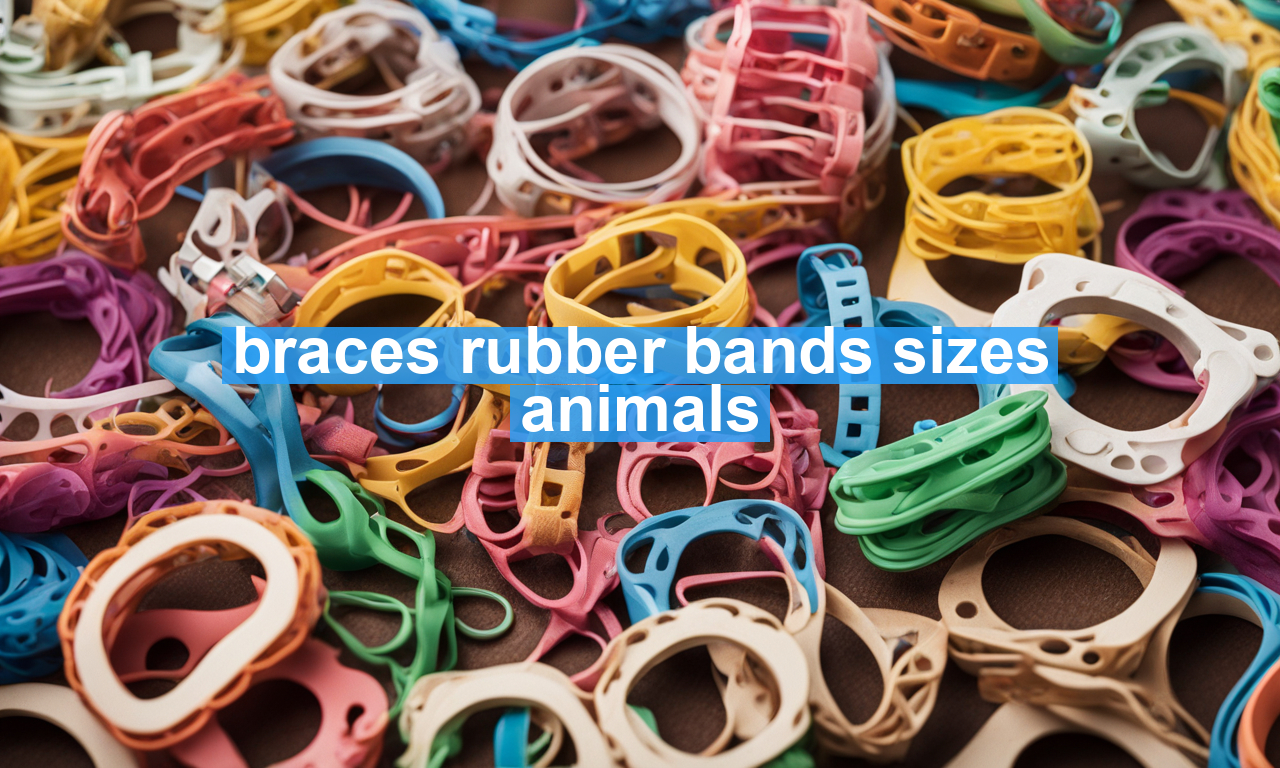Did you ever think something as tiny as a rubber band could have a big impact on your smile? In the fascinating world of orthodontics, braces rubber bands play a pivotal role. Their intricate design and varied sizes are tailored not just to straighten our smiles but, interestingly, also resemble the complex functionality found in the jaws of some of our favorite animal models. In this article, we’re diving deep into the types and sizes of braces rubber bands, drawing intriguing connections with animal anatomy to make sense of how these little loops can work miracles in dental care.
The Unsung Heroes of Orthodontics: Rubber Bands
Rubber bands, or elastics, are more than just accessories for braces. They are an integral tool used by orthodontists to adjust the alignment of teeth and jaw. Whether you’re familiar with the concept or completely new to it, understanding their purpose can clear up some of the mystery behind orthodontic treatments.
How Do Braces Rubber Bands Work?
Simply put, these elastics create the necessary tension to move teeth. When properly adjusted, they apply consistent force that gently guides teeth into their desired positions. They can help correct issues such as:
- Overbites: Where the upper teeth protrude over the lower set.
- Underbites: The opposite of overbites; the lower teeth are too far forward.
- Crossbites: Misalignment of dental arches.
Curious to learn more about how braces align teeth? You might find this explanation from Mayo Clinic insightful.
Types of Rubber Bands Used in Braces
Different bite issues require different types of rubber bands, and they vary in size, thickness, and force:
- Interarch Elastics: These are used to adjust the bite by connecting the upper and lower braces. They typically help in aligning the jaws.
- Intra-arch Elastics: These elastics work on one jaw, aiming to straighten crooked teeth in either the upper or lower set.
Each type of elastic band is chosen based on its specific purpose and the orthodontic goals for the patient. The orthodontist decides the kind, based on the individual’s needs.
The Connection Between Jaw Anatomy and Orthodontic Elastics
In examining how rubber bands work in braces, a fascinating parallel can be drawn with the animal kingdom. Rubber bands emulate the natural forces found in animal jaws, optimizing the complex balance needed for efficient bite and alignment.
Animal Models: Nature’s Version of Orthodontic Devices
Various animals help build models for orthodontic research, thanks to their diverse jaw structures:
- Alligators: Known for their powerful bites, alligators use muscle tension much like elastics to maintain a strong, aligned disposition.
- Horses: With their unique jaw movements, horses provide insights into multi-directional forces, much like complex rubber band configurations in fashioning a symmetrical bite.
Fascinated by animal anatomy’s contribution to science? Read more about alligator jaws here.
Choosing the Right Size for Success
Rubber band sizes vary depending on the specific orthodontic requirements and individual anatomy. Here are aspects to consider:
Understanding Rubber Band Sizes
- Diameter: This is the distance across the band, measured in fractions of an inch. Common options include 1/8″, 1/4″, and 3/16″. The smaller the diameter, the tighter the band.
- Force: Measured in ounces, it ranges from 1.5 oz. to 6 oz. The orthodontist will specify the force level needed based on treatment goals and the individual’s pain tolerance.
Your orthodontist will make these adjustments to ensure that the treatment is effective and comfortable. If you’re on the hunt for more details about the right fit and function of orthodontic bands, this guide by the American Association of Orthodontists might be helpful.
Living with Braces and Rubber Bands: Tips for Success
Adjusting to life with braces and elastics can feel daunting, but understanding some tips and tricks can make things smoother:
- Consistency is Key: Wear the bands as directed by your orthodontist. Not wearing them could prolong treatment time.
- Replacement: Elastics lose elasticity over time. Change them regularly to ensure effective force.
- Oral Hygiene: Keep excellent oral hygiene to prevent issues such as cavities or gum disease during treatment.
The commitment to rubber bands may seem small, but the rewards—a beautiful, aligned smile—are certainly worth it. With the knowledge of how they work, and their connection to the natural world, you can appreciate the _delicate balance_ these tiny but mighty tools achieve. Whether for correcting malocclusion or crafting a confident smile, braces rubber bands, in comparison to animals, underline nature’s ingenious engineering and its influence on modern science.

